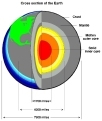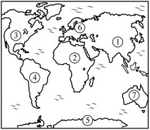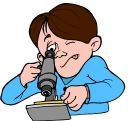
Worksheets and No Prep Teaching Resources
Reading Comprehension Worksheets
Earth

Earth
 Worksheets and No Prep Teaching Resources Reading Comprehension Worksheets Earth |
 Earth |
| edHelper's suggested reading level: | high interest, readability grades 6 to 7 | |
| Flesch-Kincaid grade level: | 6.26 |
|
Earth's Varied Topography
By Patti Hutchison |

|
 1 Have you ever driven through Kansas? The land is very flat in all directions. As you drive westward and into Colorado, suddenly you see the Rocky Mountains rising out of the land. As you continue driving into Colorado, the mountains grow taller and more beautiful. How boring Earth would be if it were all flat land! Instead, we are lucky to have some interesting topography.
1 Have you ever driven through Kansas? The land is very flat in all directions. As you drive westward and into Colorado, suddenly you see the Rocky Mountains rising out of the land. As you continue driving into Colorado, the mountains grow taller and more beautiful. How boring Earth would be if it were all flat land! Instead, we are lucky to have some interesting topography. |
Create Weekly Reading Books
Prepare for an entire week at once! |
| Leave your feedback on Earth's Varied Topography (use this link if you found an error in the story) |
 |
Earth
|
 |
Continents Activities, Worksheets, Printables, and Lesson Plans
|
 |
Special Education Science Materials for Teachers
|
 |
Science
|